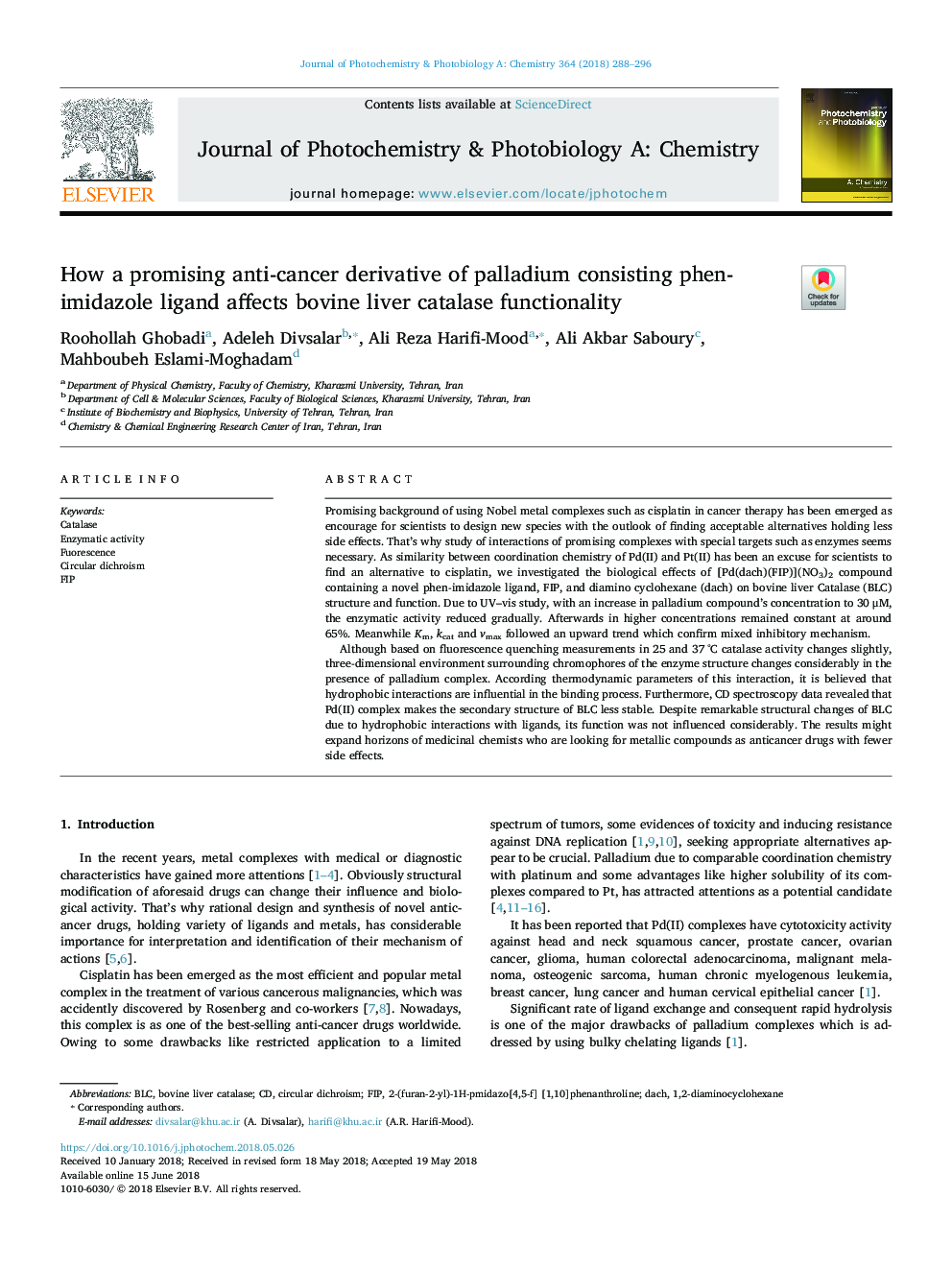| Article ID | Journal | Published Year | Pages | File Type |
|---|---|---|---|---|
| 6492367 | Journal of Photochemistry and Photobiology A: Chemistry | 2018 | 9 Pages |
Abstract
Although based on fluorescence quenching measurements in 25 and 37â¯Â°C catalase activity changes slightly, three-dimensional environment surrounding chromophores of the enzyme structure changes considerably in the presence of palladium complex. According thermodynamic parameters of this interaction, it is believed that hydrophobic interactions are influential in the binding process. Furthermore, CD spectroscopy data revealed that Pd(II) complex makes the secondary structure of BLC less stable. Despite remarkable structural changes of BLC due to hydrophobic interactions with ligands, its function was not influenced considerably. The results might expand horizons of medicinal chemists who are looking for metallic compounds as anticancer drugs with fewer side effects.
Keywords
Related Topics
Physical Sciences and Engineering
Chemical Engineering
Bioengineering
Authors
Roohollah Ghobadi, Adeleh Divsalar, Ali Reza Harifi-Mood, Ali Akbar Saboury, Mahboubeh Eslami-Moghadam,
